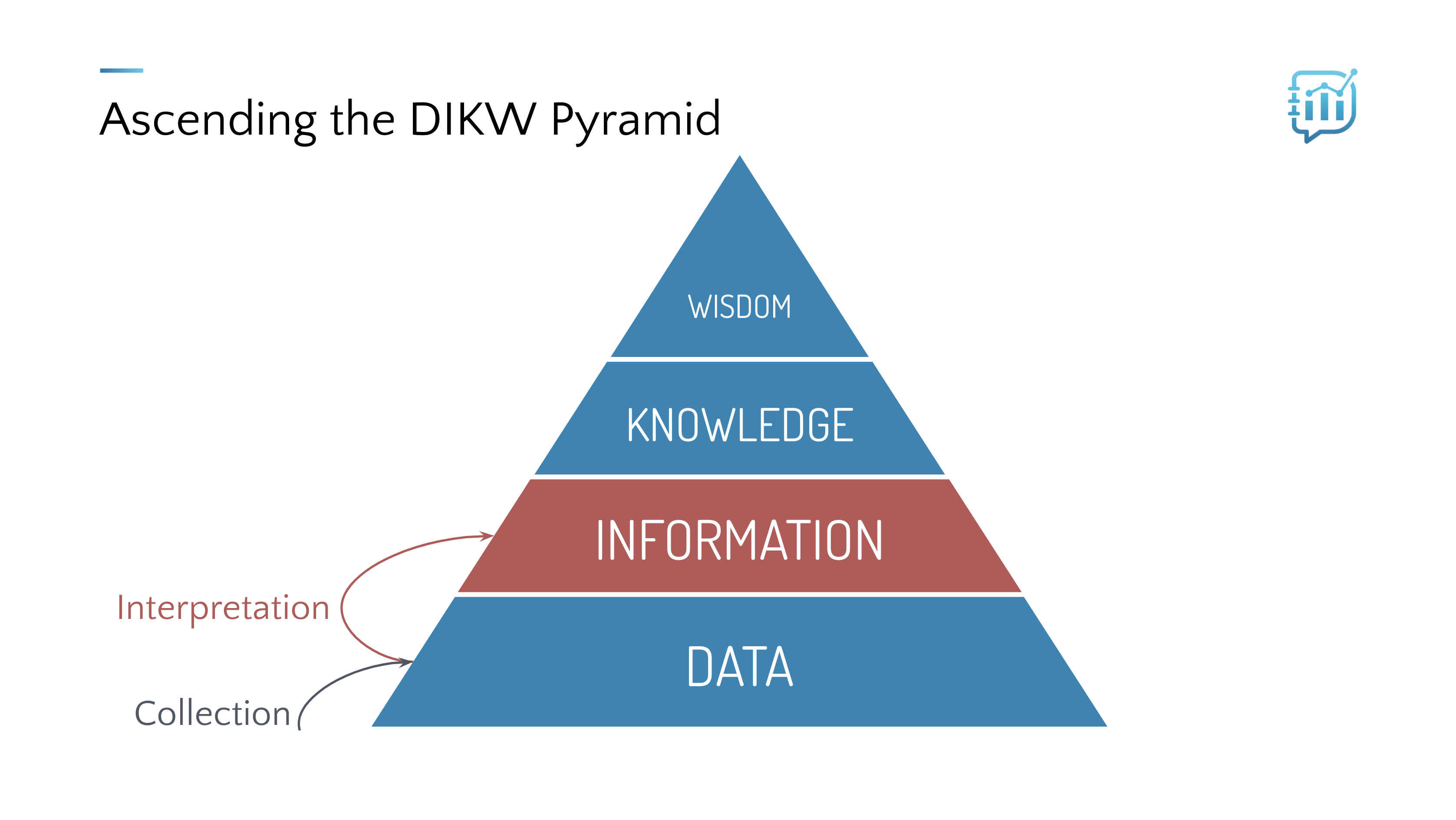1.3 The Information Level of the DIKW Pyramid
Topic Summary
In this topic we explore the second level of the DIKW Pyramid: Information. We consider how there can be more than one way to interpret even a simple data point, and that we need to know the meaning of the data in order to correctly understand what it’s telling us. We then consider that there are situations in which the structure of the data may need to be modified in order for us to be able to extract information from it.
Key Points to Remember
In order to turn data into information, we need to know how to interpret it, and we may need to reorganize it to put it in a better shape to use it. The following list provides a few basic but common examples:
- Any terms or acronyms and how they’re defined (e.g. EPS = “earnings per share”)
- Any units or conventions (e.g. $ = U.S. dollars, Q1 = the first quarter of the fiscal year)
- The structure of the data, and how it might need to be restructured to suit our purposes (e.g. the data is individual transactions but we need monthly totals)
Definitions
- information, noun – data that has been organized or formatted so as to be intelligible and useful to us, or
- facts provided or learned about something or someone, or
- what is conveyed or represented by a particular arrangement or sequence of things
- filter, verb – to choose a subset of the data for view or analysis by excluding records you don’t want to view, and including those you do want to view.
- Example: We filtered the list of members to just those who joined the group in the last month, and we sent them a special welcome email.
- aggregate, verb – to collect or gather into a whole
- Example: We aggregated all of the sales transactions for March to determine the total monthly revenue
Diagrams

The Information Level of the DIKW Pyramid
Exercises
Exercise 1.3. Pick one of the data sources from your list in Exercise 1.2. Write down at least one piece of information that you gleaned from this data, and how you needed to interpret it in order to turn it into information:
- Data:
- Information:
- Steps you took to interpret the data so you could turn it into information (e.g. terms, acronyms, units of measure):
Quotes
“You can have data without information, but you cannot have information without data.”
Daniel Keys Moran